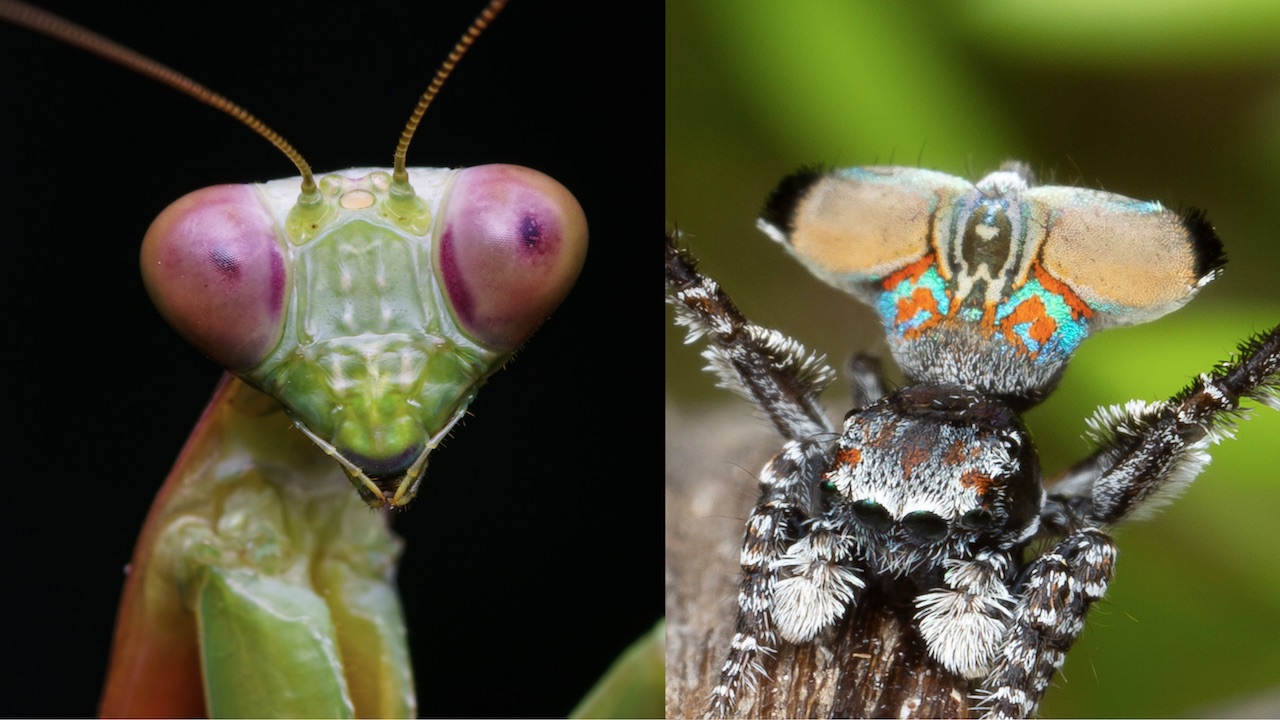You're Not Seeing Things, These Spider Butts Look Like Faces
The flashy abdomens of male peacock spiders may serve a very important purpose.

AUSTIN, Texas — Male peacock spiders have the ultimate challenge to contend with when it comes to mating: The much larger females would rather kill and eat the male than have sex with him. But the males might have a clever trick up their sleeve, or abdomen, rather.
New research presented here on Jan. 4 at the Society of Integrative and Comparative Biology meeting suggests that the intricate and colorful designs on the male's abdomen make him look like a predator, which may stop the female from attacking and eating him and therefore give him a chance to mate.
Male peacock spiders (in the Maratus genus) are well-known for their elaborate courtship dance. The male hops around directly in front of a female, waving his fabulous butt in the air like he just don't care. Some of these displays are particularly interesting because the designs on the males' flipped-up abdomens look like the faces of their predators, such as wasps and mantises.
Related: See Stunning Images of Flashy Peacock Spiders
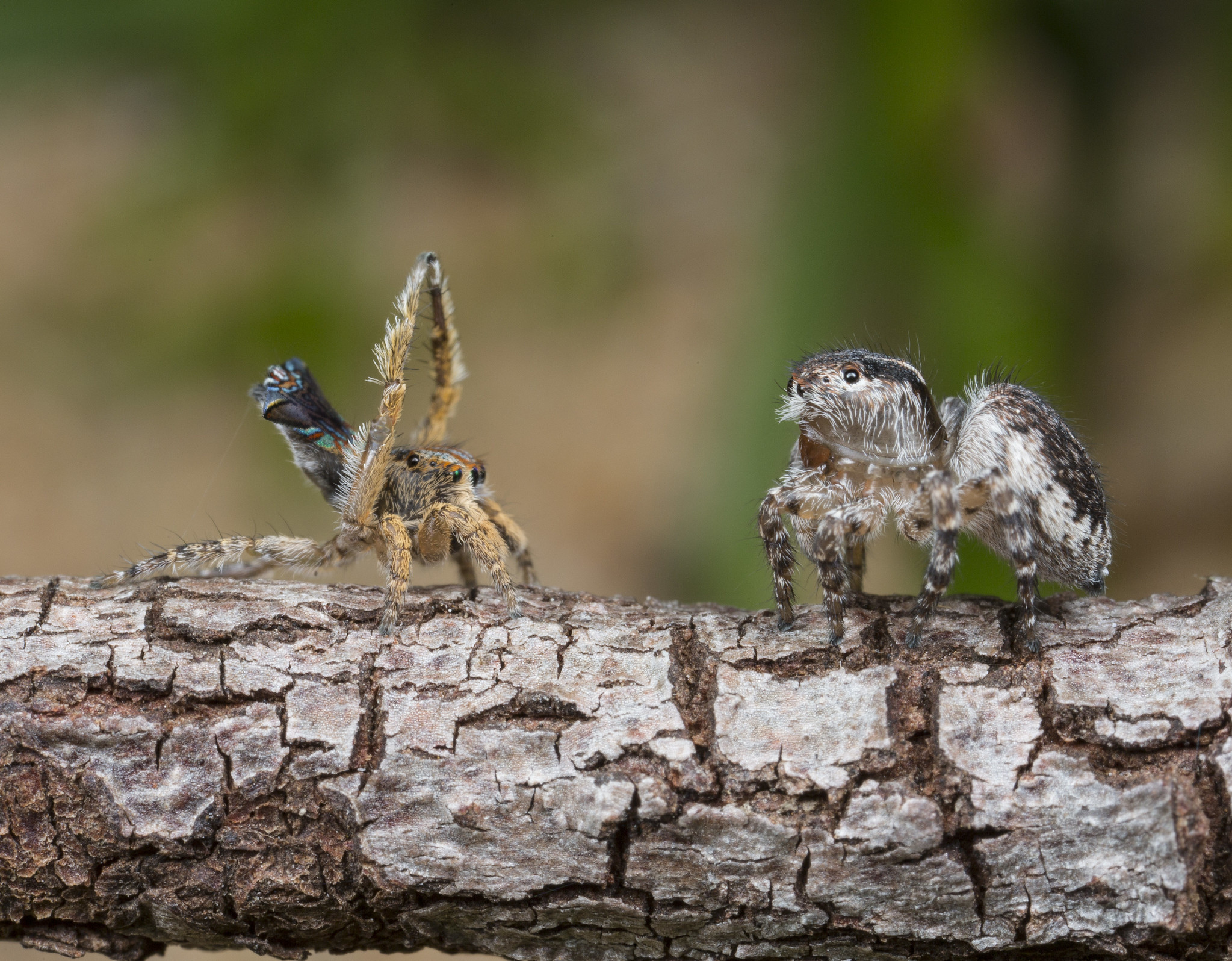
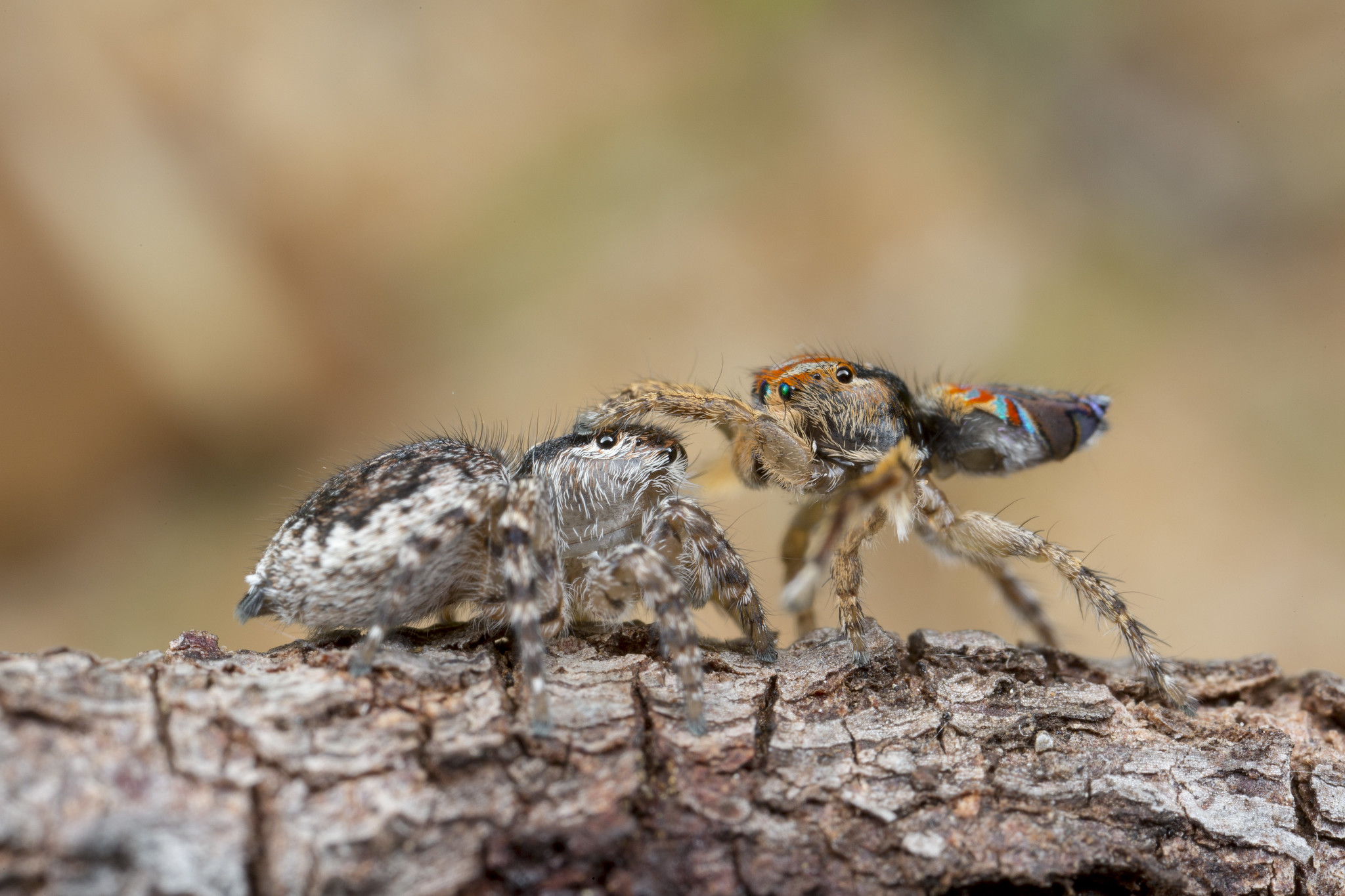
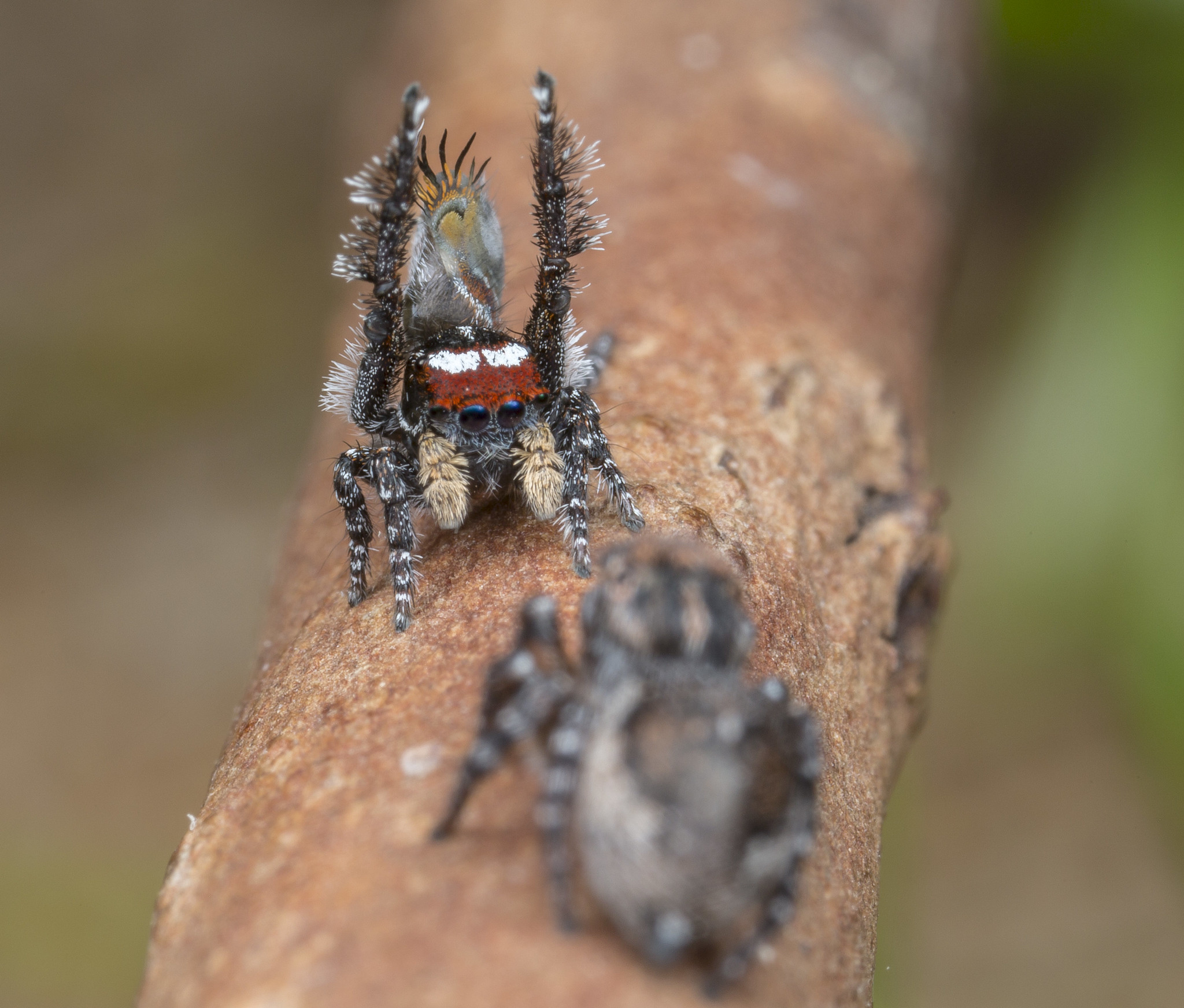
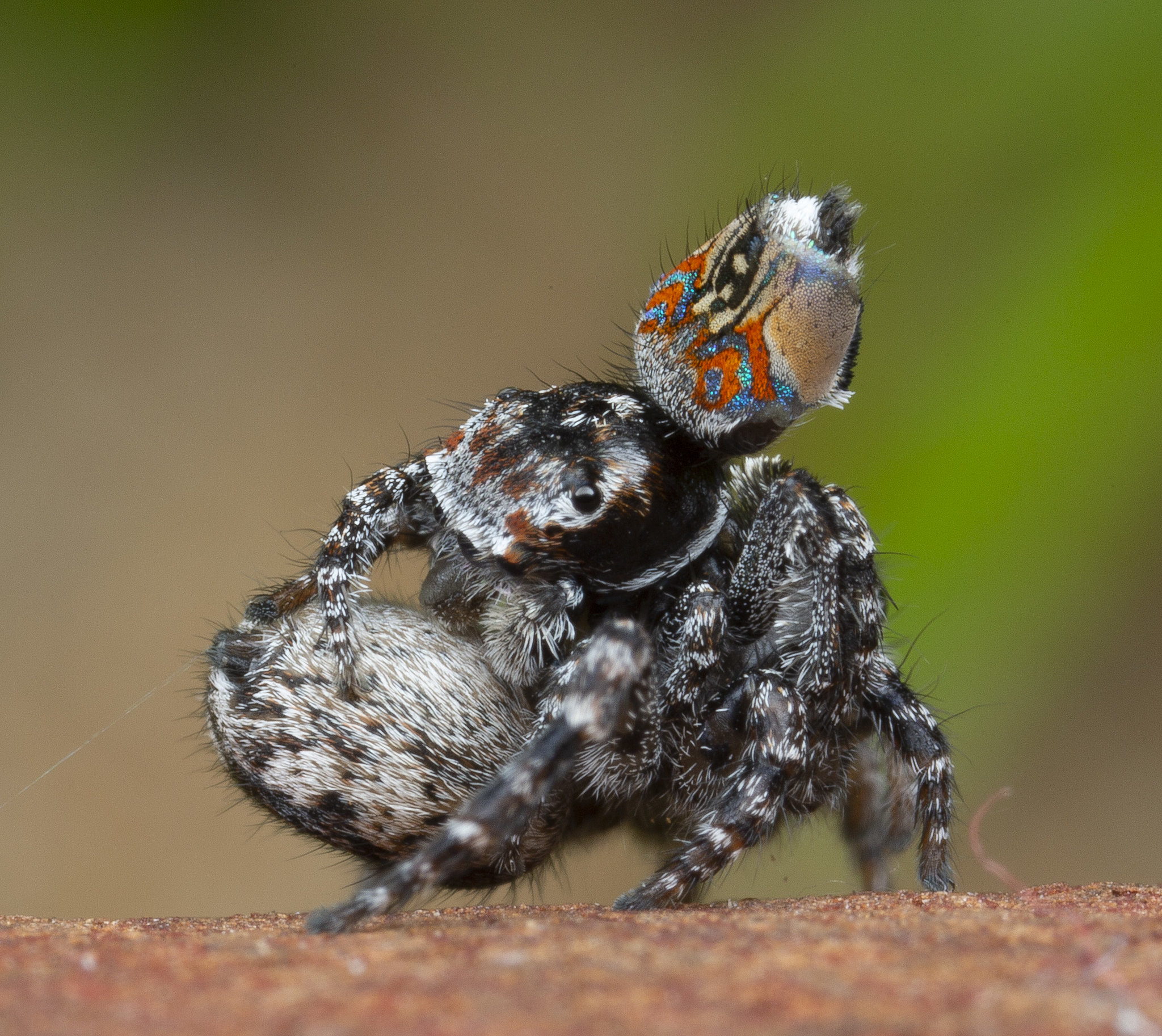
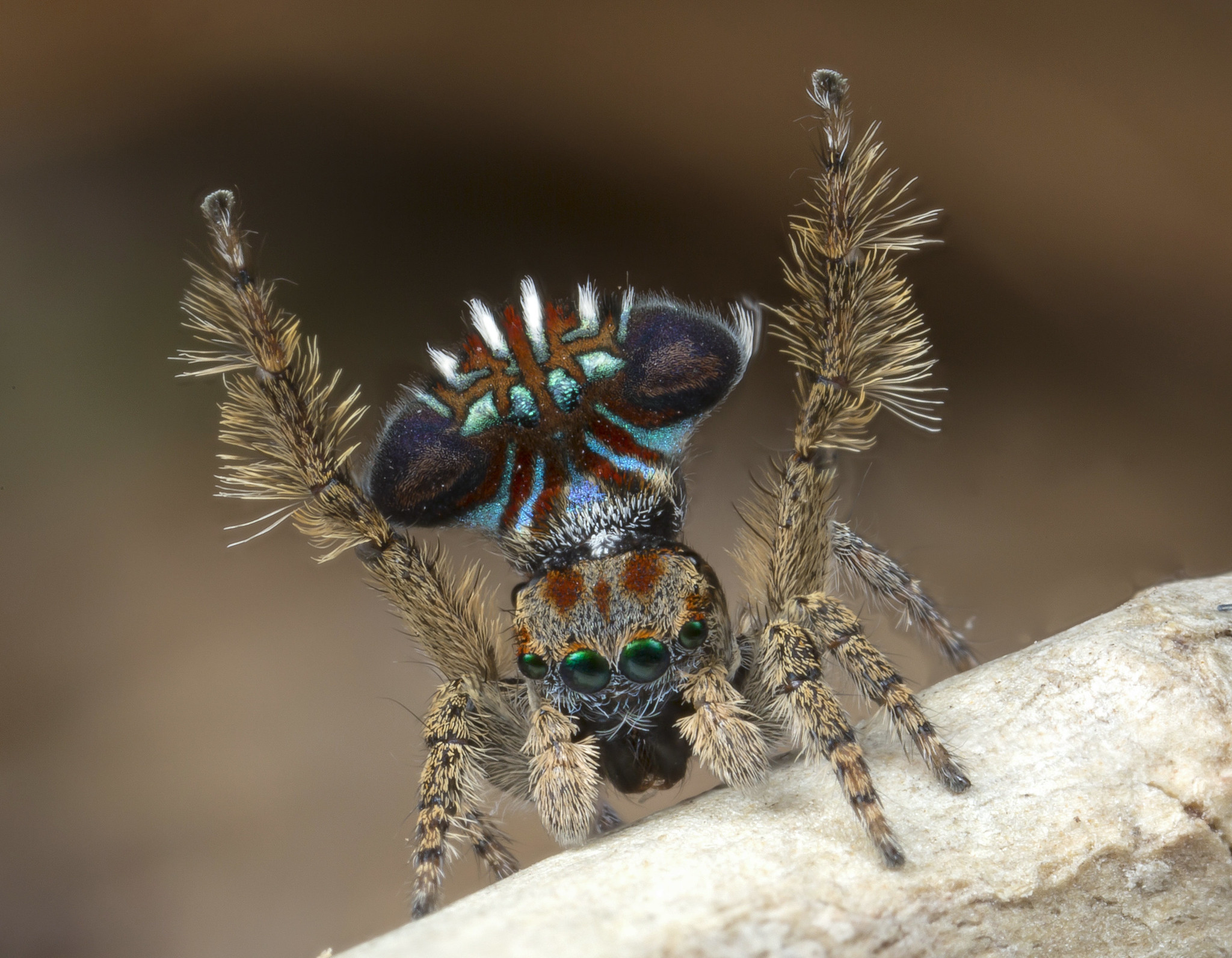
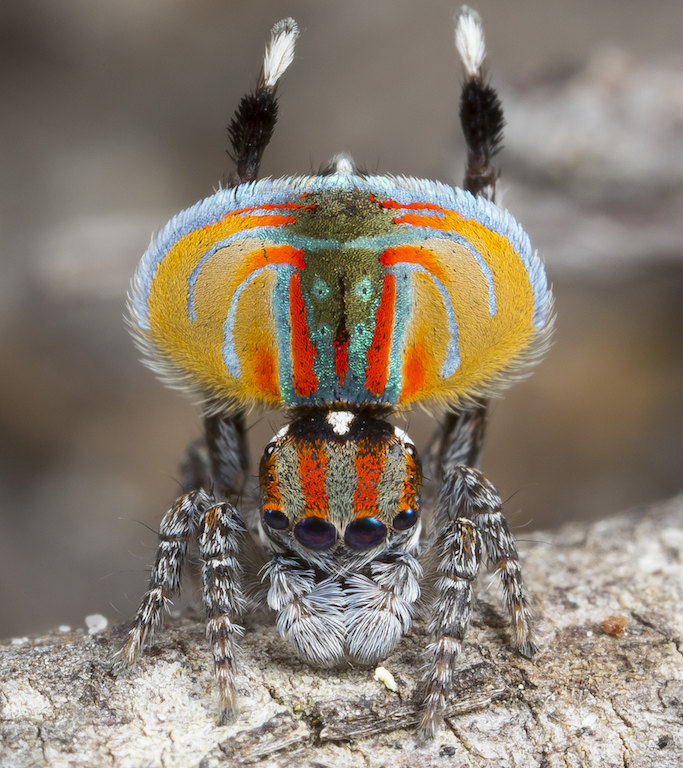
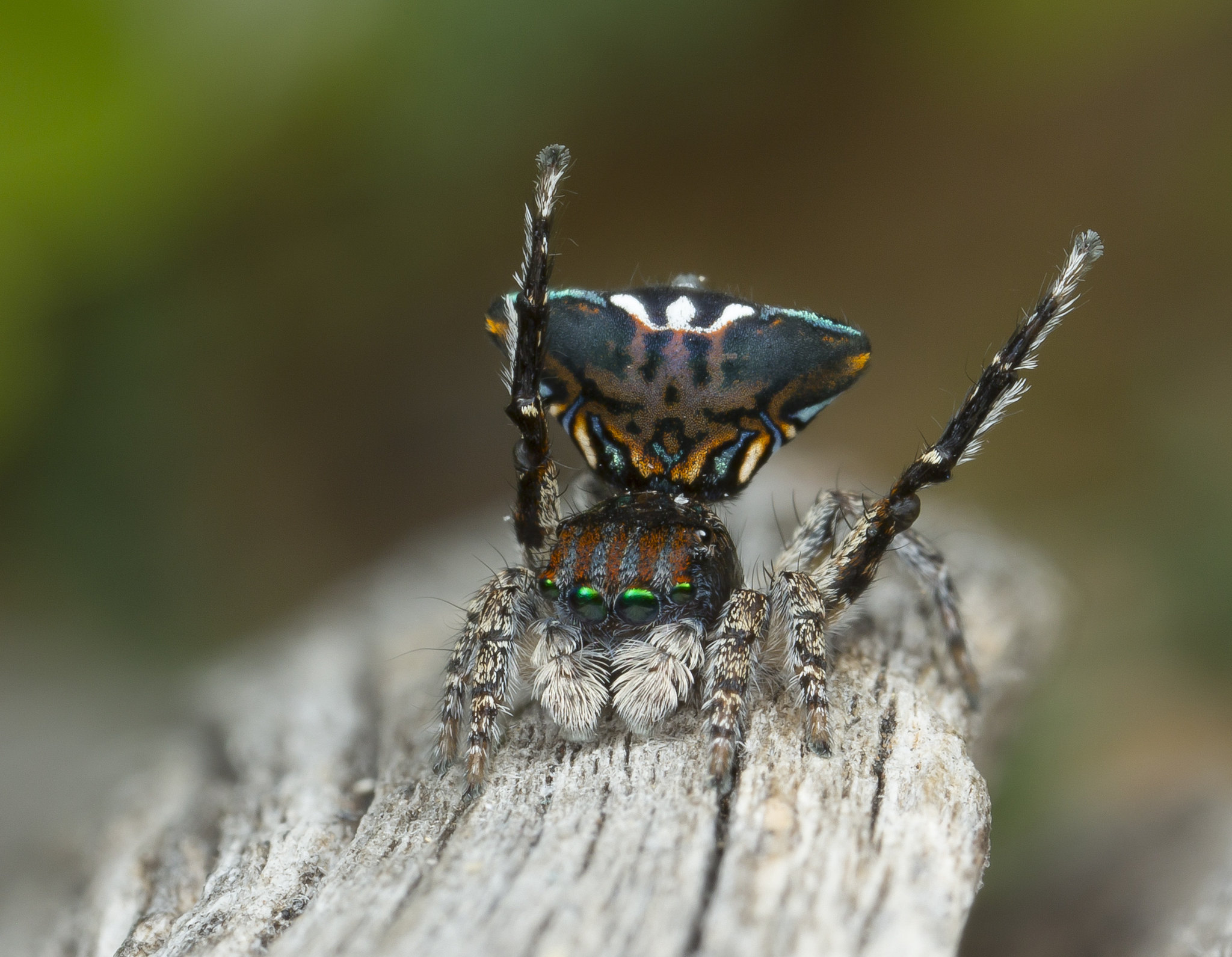
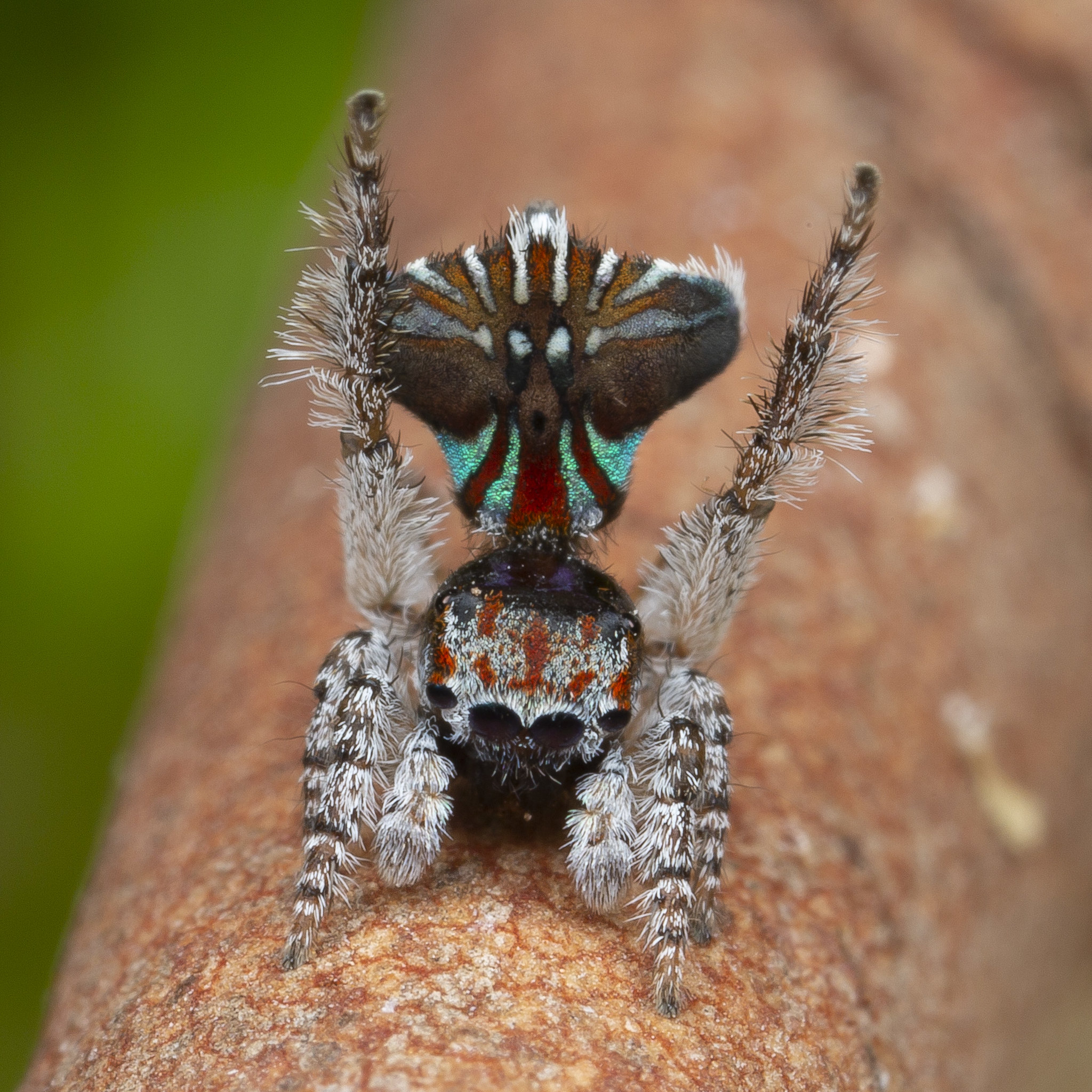
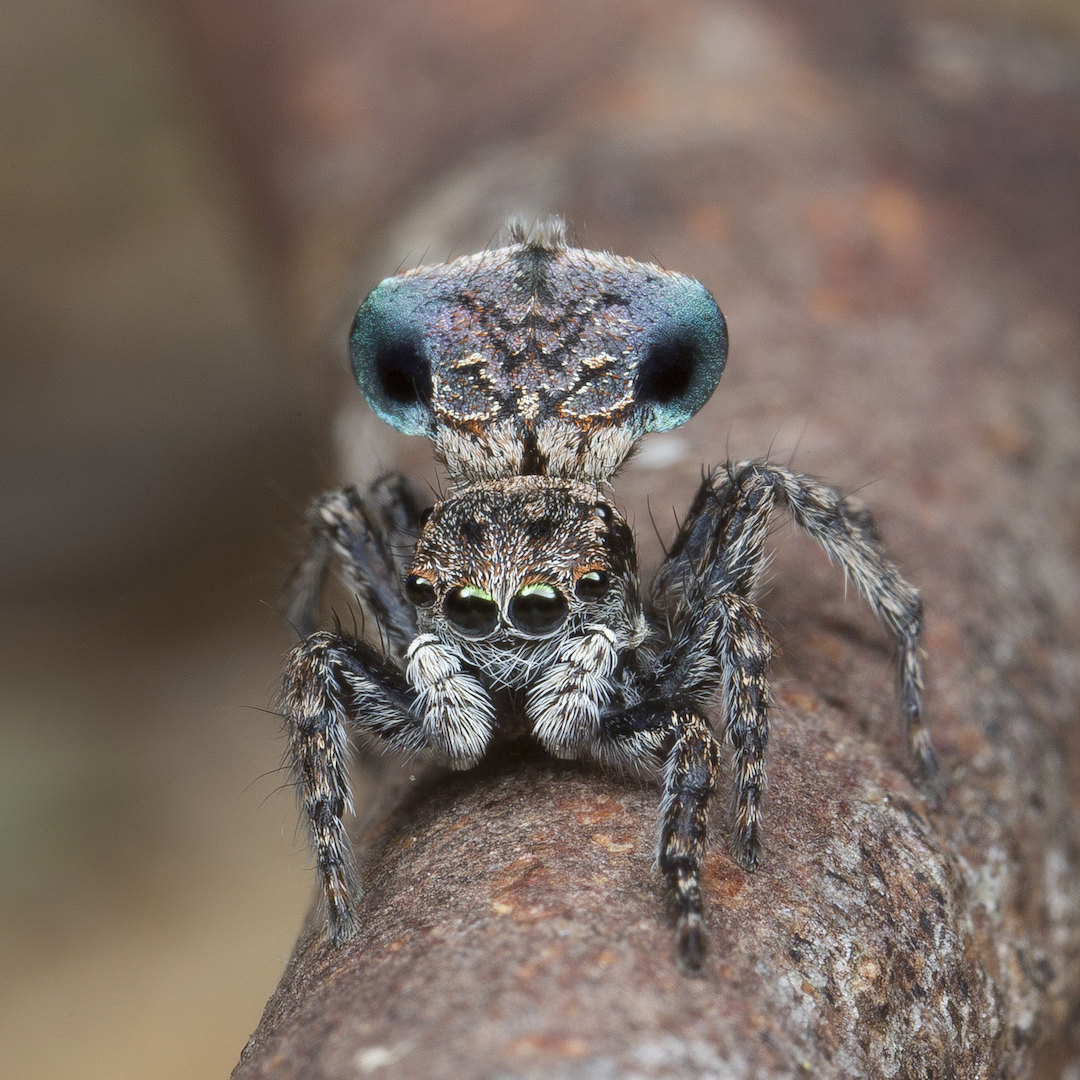
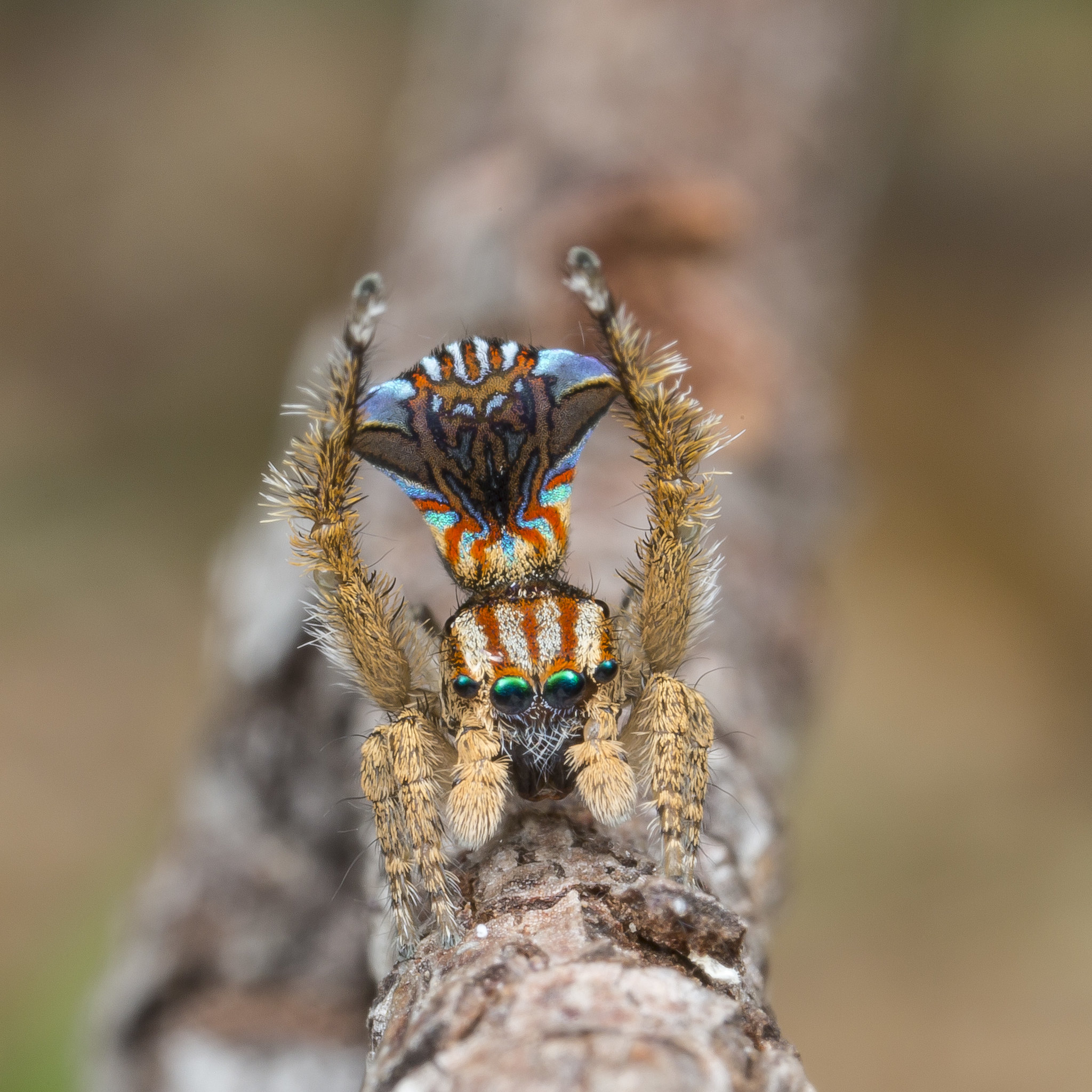
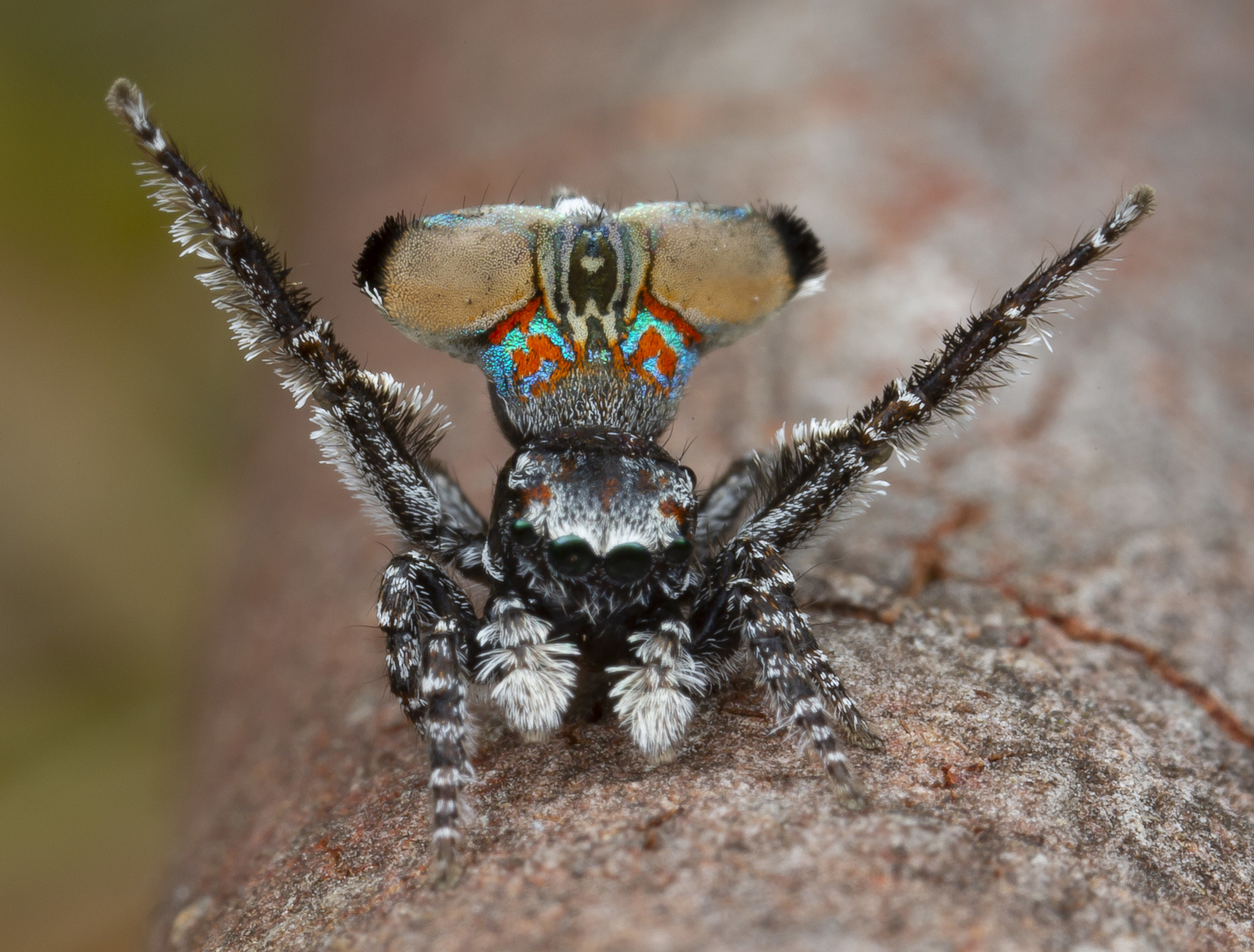
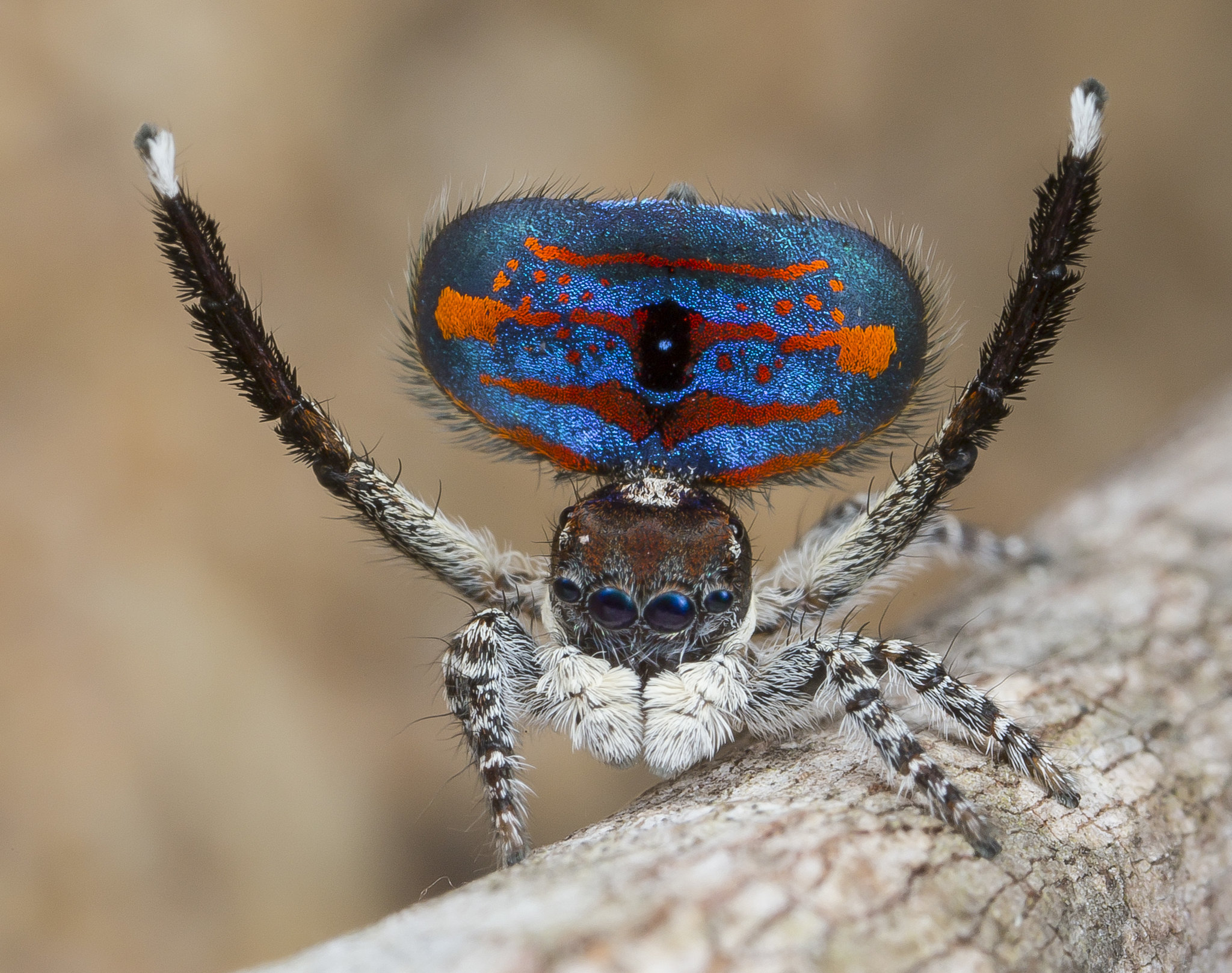
The natural response of these spiders when they see something scary, like a predator, is to freeze and closely watch the potential threat. So, male peacock spiders might be flipping up their flashy rears in front of a female to scare her stiff and stop her from eating him.
"Humans, however, are really excellent at seeing faces where there aren't faces," said Olivia Harris, a biologist at the University of Cincinnati and lead author on the study. To figure out if humans are seeing patterns that aren't really there, Harris used machine learning to compare images of the spiders' abdomens with images of the spiders' predators.
The photos were taken by Jurgen Otto, an Australian scientist and photographer, who has created the most comprehensive collection of pictures of peacock spiders and information about the Maratus genus. After training the computer to distinguish between spiders and other invertebrates, Harris had the computer classify different images as either spider, mantis or wasp. The machine did a pretty good job, reaching as high as 95% accuracy, she said; but the vast majority of the machine's mistakes occurred because it misclassified the spider abdomen as a mantis or a wasp. The abdomen designs of some of the spider species, such as Maratus aquilus, look so much like a mantis face that the computer never got it right and always categorized it as a mantis.
Get the world’s most fascinating discoveries delivered straight to your inbox.
The male spiders may use their misleading abdomens to stop a female in her tracks, but "there has to be some moment when the male clues in the female or gets close enough that the female figures out [he's] not something to be scared of," Harris said. "That's important because copulation for these spiders involves female involvement. There's no forced copulation." The male just needs the female to freeze and watch his display long enough to convince her that she likes it. That could be why, after startling the female, some males lift a leg on either side, slightly obscuring the image on his abdomen, as if signaling to the female, "But look, I'm actually a great male! Aren't I pretty?"
"The [males] are always taking a risk, because the females are much larger and will totally eat him," Harris said. So the next step in this research, she said, is to observe spider-mating behavior in the lab to determine if the males of peacock spider species that have predator-mimicking displays get attacked less often than the species that don't.
- 21 Totally Sweet Spider Superlatives
- In Photos: 7 New Species of Peacock Spider
- Incredible Photos of Peacock Spiders
Originally published on Live Science.
Editor's note: This article was updated at 12:37 p.m. to reflect a correction about the accuracy of the computer: It was correct 95% of the time, not 65%. This article was also updated on Jan. 13, 2020 to correct "moths and mantises" to "wasps and mantises."


Kimberly has a bachelor's degree in marine biology from Texas A&M University, a master's degree in biology from Southeastern Louisiana University and a graduate certificate in science communication from the University of California, Santa Cruz. She is a former reference editor for Live Science and Space.com. Her work has appeared in Inside Science, News from Science, the San Jose Mercury and others. Her favorite stories include those about animals and obscurities. A Texas native, Kim now lives in a California redwood forest.


